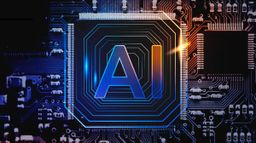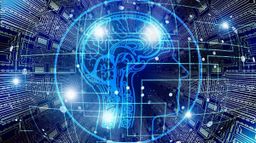[ad_1]
All current AI technologies fall into the category of Narrow Artificial Intelligence (ANI), which means that they are very good at only one or a few closely related tasks. Knowing this, in this report you will be able to know everything about her.
Interest in artificial intelligence (AI) has increased with the appearance of such media tools as ChatGPT. However, this and the myriad of other related innovative projects we have witnessed in AI they still take the form of what can be called “limited” intelligence.
And it is that, being clear, only scratched the surface of what this new technology can be. Although we have all been amazed by ChatGPT, this chatbot has the essence of limited artificial intelligence (ANI).
To give you an initial idea, ANI contrasts with artificial general intelligence (AGI)which we have already talked about in another video and the effort of several decades to bring generalized human intelligence to machines.
With this as a base, it is necessary to enter the world of the ANI, which, unlike the AGI, does it can be said that it is already widely among all of us.
What is ANI or Limited Artificial Intelligence?
The ANI is a type of AI designed to perform a single or a very limited set of related tasks at a high level of proficiency. It is also known as weak AI, narrow AI, limited AI, or even specialized AI. ANI systems are typically trained on a large data set and can make decisions or take actions based on this training.
Unlike humans, ANI systems require reprogramming or reconfiguration by humans when the context or specification of what you want it to do changes, even slightly.
This is because they lack the ability to adapt to new goals or circumstances and generalize knowledge from one context to another, which humans do through transfer learning.
ANI systems They can be classified into two categories: supervised learning systems and unsupervised learning systems. Supervised learning systems are trained on labeled data sets that allow the system to learn the relationship between the input data and the desired output.
On the other hand, unsupervised learning systems train on unlabeled data sets and can identify patterns and relationships in the data without guidance.
The ANI is present in many aspects of life even if you don’t imagine it, like Google Translate and Siri. For some, these applications are not weak because they are capable of sophisticated interactions.
These applications, however, are considered weak or limited because they cannot match human intelligence, since ANI is neither sensitive nor conscious and, as in the aforementioned cases, its use is intended for a single function such as assistant or translator.
However, despite the fact that it may seem otherwise, their advantages are majority since they perform individual tasks well, often better than humans. A system of artificial intelligence A weak device designed to identify cancer from X-ray or ultrasound images, for example, could detect a cancer in images faster and more accurately than a highly-skilled radiologist.
Still, weak AI systems can only do what they are designed to do and can only make decisions based on their training data. That is its great and only disadvantage.
What are the benefits of using ANI?
The ANI that commonly comes into play in our daily lives falls into two categories: symbolic AI and machine learning (Machine Learning).
1. Symbolic artificial intelligence
Also known as good old fashioned AI (GOFAI), symbolic AI used to be the main focus of research in the area. This type of ANI requires programmers to explicitly define the rules that they expect the intelligent system to follow.
As such, they are best used in applications that have clear steps to follow and predictable results. While symbolic AI isn’t widely used these days, it paved the way for most rule-based systems.
2. Machine learning
Automatic learning or Machine Learning, on the other hand, is a type of ANI that creates intelligent systems through examples. Developers first build a model and train it by presenting many different instances.
The algorithm uses machine learning processes to derive mathematical representations by predicting outcomes and classifying tasks based on the examples.
For example, developers can train a program to analyze millions of credit card transactions and determine legitimate and fraudulent transactions. Over time, the model can predict whether or not a particular transaction should be approved.
Limited AI Examples
All forms of modern AI systems can be classified as limited AI. They are the following:
1. Image systems and facial recognition. These systems, including those used by social media companies like Facebook and Google to automatically identify people in photos, are forms of weak AI.
2. Chatbots and conversational assistants. This includes popular virtual assistants like Google Assistant, Siri, Alexa, and the recent ChatGPT. Simpler customer service chatbots are also included, such as a bot that helps customers return an item to a retail store.
3. Autonomous vehicles. Autonomous or semi-autonomous cars, such as some Tesla models and autonomous drones, boats and factory robots, are all applications of limited AI.
4. Predictive maintenance models. These models are based on machine data, often collected through sensors, to help predict when a machine part may fail and alert users in advance.
5. Recommendation engines. These systems predict the content that a user might like or search for. This could also include email spam filters that work with ANI.
Limited AI vs General AI (Weak AI vs Strong AI)
- Narrow artificial intelligence (ANI or limited AI) refers to the ability of a system to perform a single task extremely well, such as crawling a web page or playing chess.
- Artificial General Intelligence (AGI or Strong AI) is when a computer program can perform any intellectual task that a human could.
- Artificial Super Intelligence (ASI) is an AI that surpasses human intellect
AGI implies a system with comprehensive knowledge and cognitive capabilities such that its performance is indistinguishable from that of a human, yet its speed and ability to process data is much greater. Such a system has not yet been developed, and experts’ opinions differ on whether they will even be able to create it.
Some experts believe that an artificial general intelligence system would need to possess human qualities, such as awareness, emotions and critical thinking, and this is something that can hardly be attributed to a machine, no matter how efficient and intelligent it is.
Limited AI-based systems have neither of these qualities, although they can often outperform humans when told to do a particular task.
These systems are not intended to fully simulate human intelligence, but rather to automate specific human tasks using machine learning, deep learning, and natural language processing (NLP).
[ad_2]











Leave a Reply